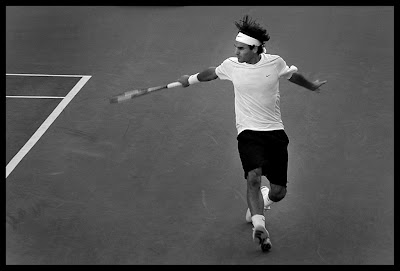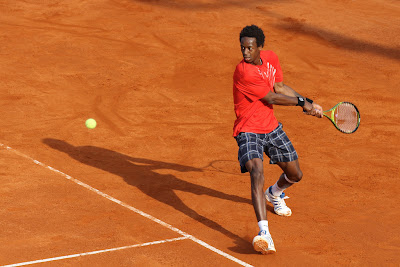 |
| Photo By Shreyans Bhansali |
Photographing moving subjects is an entirely different ball game than shooting still subjects. Often photographers are in a dilemma as to whether he should freeze the motion or should he try to capture it in his frames. Some genres of photography like sports and wildlife demand to freeze action most of the time. And others like landscape photography call for capturing the movement, especially that of water.
Many times totally freezing your subjects can lead to a static-look, uninteresting image to the viewer. However there is one other option that most amateurs don’t often think of, that is the technique of including a little selective motion- blur; to create a sense of movement. Some of the best action shots are the results of combining selective blur with sharpness resulting in a powerful feeling of movement. Including just the right amount of movement in your pictures is more of a challenge than either completely stopping action or completely blurring it.
 |
| Photo By Phil Hilfiker |
In this article we will discuss about the various types of movement and the techniques that could be employed to partially freeze your subjects resulting in dramatic images that convey motion.
Motion and Direction
To effectively capture the right amount of blur in your photographs, one should understand the various types of motion and their characteristics. To a digital camera, motion looks different depending upon the subject’s speed, direction and distance from the camera.
Assuming that our camera remains fixed:
- Objects that are moving faster produce more blur at a given shutter speed.
- Subjects that move across the field of view appear to move faster than those heading right towards or away from the camera.
- Things that are farther away seem to be moving more slowly than those in our immediate vicinity.
Types of Motion
Parallel Motion
 |
| Photo By Charles Seguy |
Subjects moving across the field of view, parallel to the image sensor in either a horizontal or vertical direction will appear to be moving fastest and thus cause the highest amount of blur.
E.g. A racing car moving across the frame will appear to move fastest at any given shutter speed causing most amount of blur.
Head on Motion
 |
| Photo By Abrunvoll |
Motion coming towards or going away from the camera appears to move much slower and will cause much less blur.
E.g. The same race car moving at the same speed will appear less blurred if it were captured moving towards or away from the camera using the same shutter speed.
Diagonal Motion
 |
| Photo By Doug van Kampen |
Objects moving diagonally across the frame will appear to be moving at a rate that’s somewhere between parallel and head-on motion.
E.g. If the same race car moving at the same speed were coming from the upper left background and moving towards lower right foreground will display blur somewhere in between parallel and head on motion.
Distant/Close Action
 |
| Photo By Timothy |
Subjects that are closer to the camera blur more easily than subjects that are farther away, even though they're moving at the same speed. That’s because the motion across the camera frame is more rapid with a subject that is closer to the camera.
Camera Motion
So far we have discussed motion assuming that our camera remains fixed in position. Now let’s add motion to the camera also. One should understand blur as being relative to the cameras motion.
You can pan your camera following a fast moving subject and can completely freeze the action of the subject recording movement only in the background elements that remain still. But in order to do this you need to master your panning technique as if your panning movement is not smooth and not in conjunction with the movement of the subject. Any wrong movement could negatively impact image sharpness. You can refer this article to perfect your panning technique:
Some Interesting Anomalies
When attempting to stop action, there are a few anomalies you might want to consider. Some of them may not have a great impact on your pictures, but they’re interesting to know about nonetheless.
A moving subject isn’t all moving at the same speed. Some parts of the subject may be moving faster than the rest and may cause more blur thus making it possible to make a sharp image with some blurriness in the same subject.
Eg. If you photograph a runner using the right shutter speed you could completely freeze the head and the body but still record blur in hands and feet.
We have discussed about the working of focal plane shutters in an earlier article. If the subject we are shooting is moving parallel to the sensor, is fast enough and in the direction that the camera’s focal plane shutter travels, there occurs a stretching effect. You can’t get this effect with cameras that have electronic shutters.
Reciprocal exposures are not always the same. Reciprocity failure is a known phenomenon especially in long exposure shots. A 60-second exposure might not provide twice as much illumination as a 30-second exposure, because the response of the film or sensor begins to decrease over such long exposures. Action photographers may notice the same effect when using very brief exposures, particularly from flash units that clip off durations of 1/50,000th second or less.
Some cameras produce blocky artifacts at very high shutter speeds, usually 1/8,000th second or less. The cause is thought to be some kind of electronic shenanigans, and there is no known cure other than using a slower shutter speed (which most of us do, anyway.)
Action Stopping Techniques
Now it is time for us to discuss the basic techniques for stopping action; depending upon your particular needs you may combine more than one technique as necessary to get the best results.
Stopping Action with Panning
 |
| Photo By Paco Ct |
Panning is a term originally from the motion picture industry where the camera was moved in a swiveling motion to follow action as it progressed from one side of the frame to the other. The vertical equivalent is called a tilt, which is why your tripod’s camera mount may be called a pan and tilt head. In still photography, you’ll rarely need to “pan” vertically, unless you’re following a rocket as it takes off for outer space.
Eg. If the race care is moving close enough and fast enough, we might not be able to completely freeze its movement with our highest shutter speed usable. So we now move the camera in the same direction as the car is moving and the cars apparent speed is now much slower relative to the camera so a given shutter speed will be able to freeze the action.
Freezing Action Head On
 |
| Photo by David Ian Roberts |
Another way to stop action is to photograph the subject as it heads towards or away from you.
Eg. If you can’t freeze the race car moving across the frame then try to capture it from a different position so that the car is now coming towards you or even at a diagonal angle.
Freezing Action with Your Shutter
 |
| Photo By Karfax |
Using a fast shutter speed to freeze action is the most straight forward way of doing it. A fast enough shutter speed could freeze any subject irrespective of its speed, direction and distance. But there are certain limitations that one should be aware of.
First of all the maximum shutter speed most DSLR cameras are capable of achieving is 1/8000th of a second. Well it might seem adequate to freeze just about anything. But it isn’t the case, even though the camera is capable of speeds up to 1/8000th of a second, there are other limiting factors like the requirement for depth of field and the need to use lower ISO values.
The highest shutter speed that is practical even with bright illumination, a fast lens and a higher ISO rating will be around 1/4000th of a second. But usually conditions that are far from perfect will limit you to speeds of 1/500th or max 1/1000th of a second.
Freezing Action with Electronic Flash
 |
| Photo By Isaac Torrontera |
We have seen that most our digital cameras are only capable of speeds up to 1/8000th of a second. That too under ideal conditions, the technique to freeze action happening faster than these speeds is to use electronic flash units otherwise called speedlights.
Speedlights discharge their energy in very short bursts, sometimes as short a duration as 1/50,000th of a second or less, way faster than our camera shutter. The trick is to set the camera to its sync speed, eliminate ambient light from the scene and fire the flash at the subject so that the duration of the flash now becomes the exposure duration.
The relatively low power of flash units makes it not practical though not impossible to shoot outdoor especially if the subject is at a distance. But using this technique it is possible to do ultra-high-speed motion and still (stop-motion) photography capable of revealing bullets in flight, light bulbs shattering, and other phenomena.
 |
| Photo By Terence T.S. Tam |
One thing you should understand here is that the flash power stated on the flash is actually the flash duration. So the flash set to its lowest power will produce the fastest exposure times and the flash power set to its highest will produce the slowest exposure times, remember even the slowest flash exposure time is much faster than the faster shutter speed.
When Blur Is Better
 |
| Photo By Eole |
Some kinds of action should not be frozen at all, Better yet, you can use blur as a creative effect to show movement without freezing it. So use your judgment in deciding whether or not to capture action.
Post a Comment